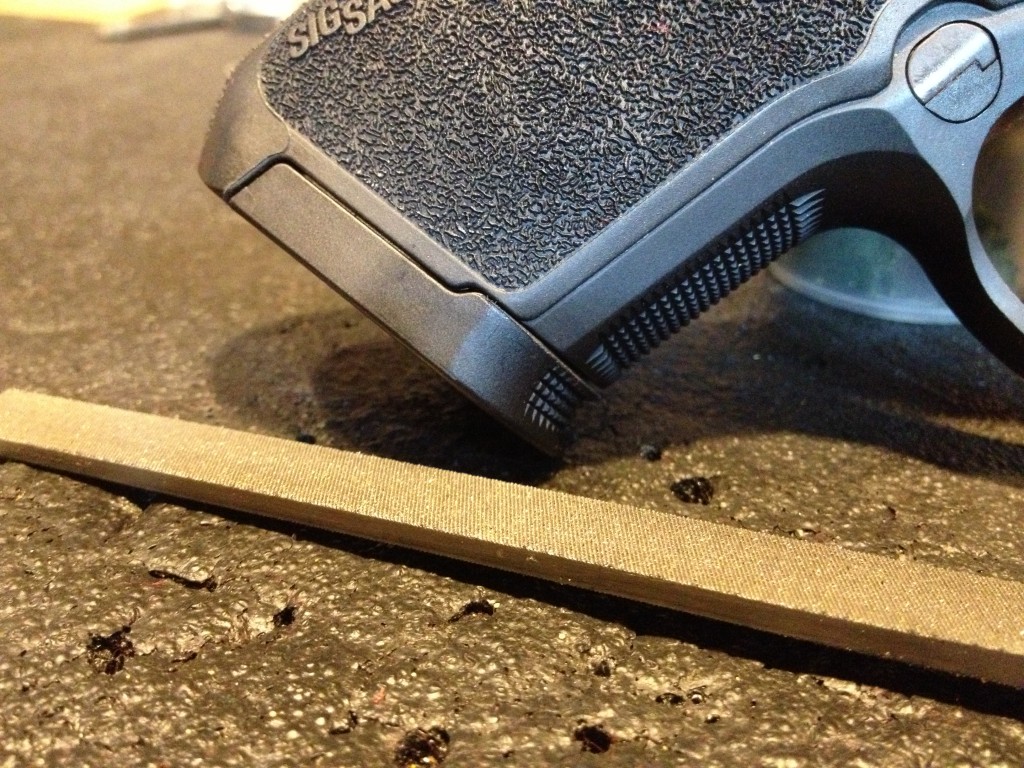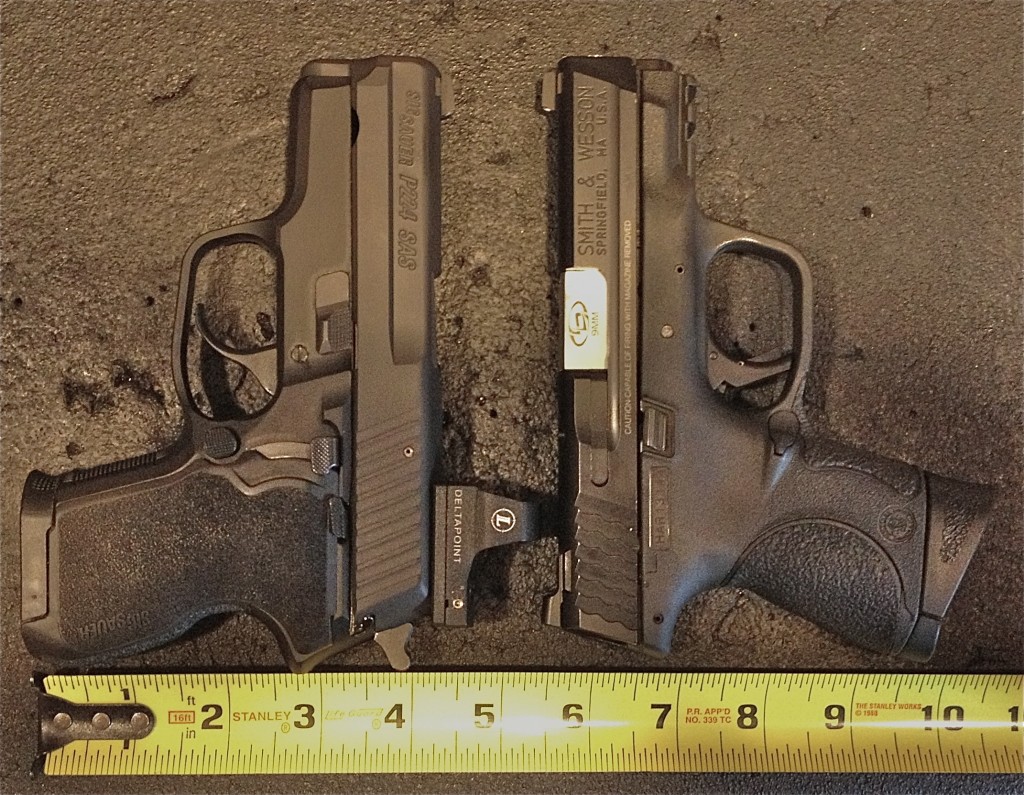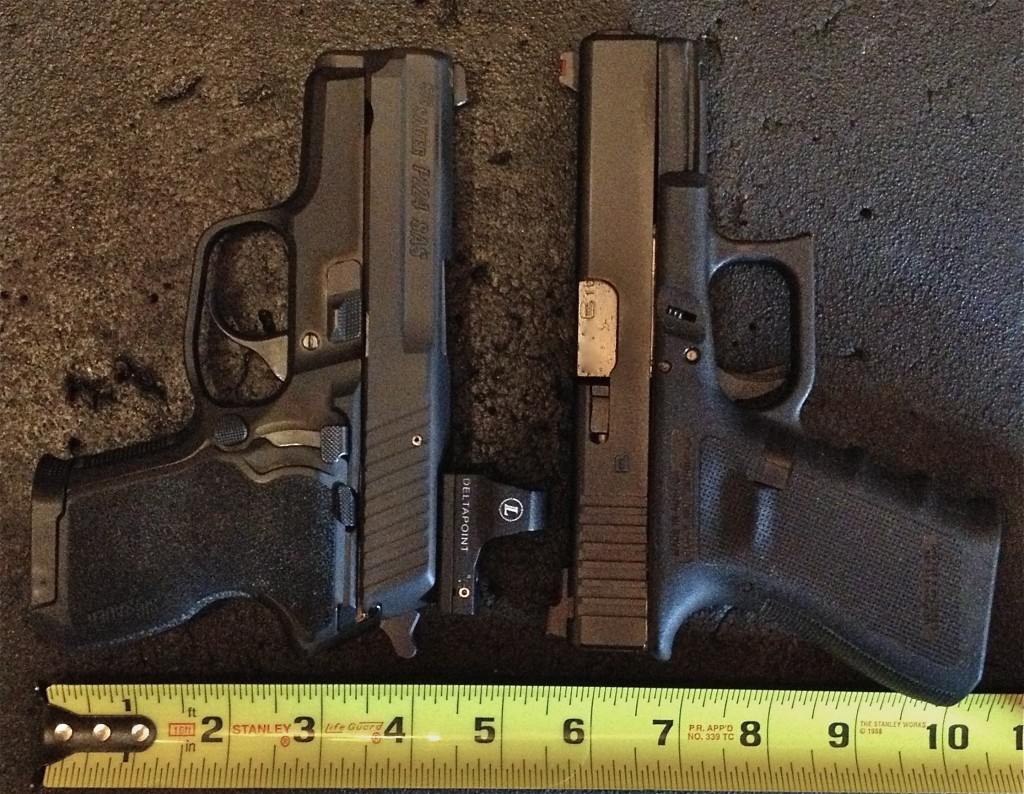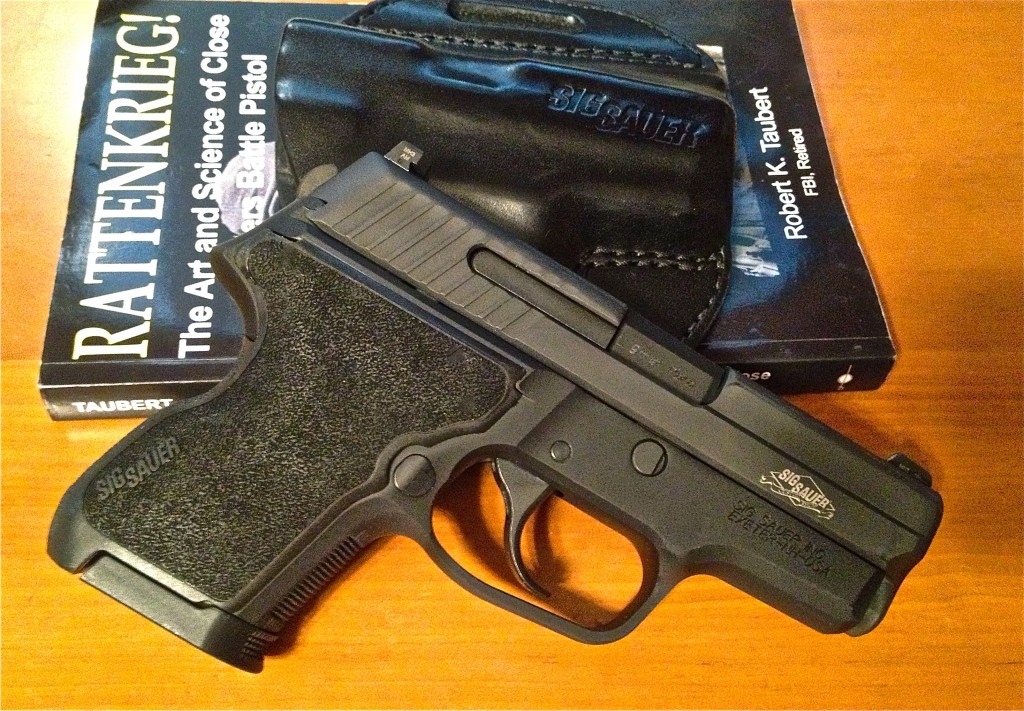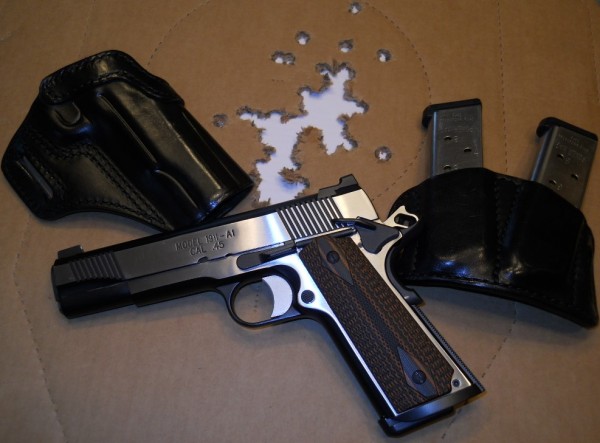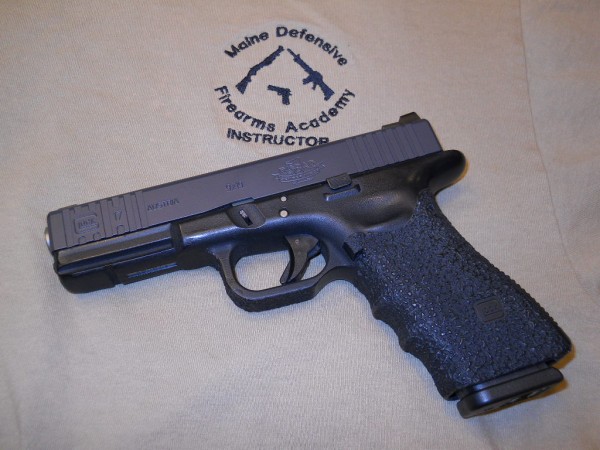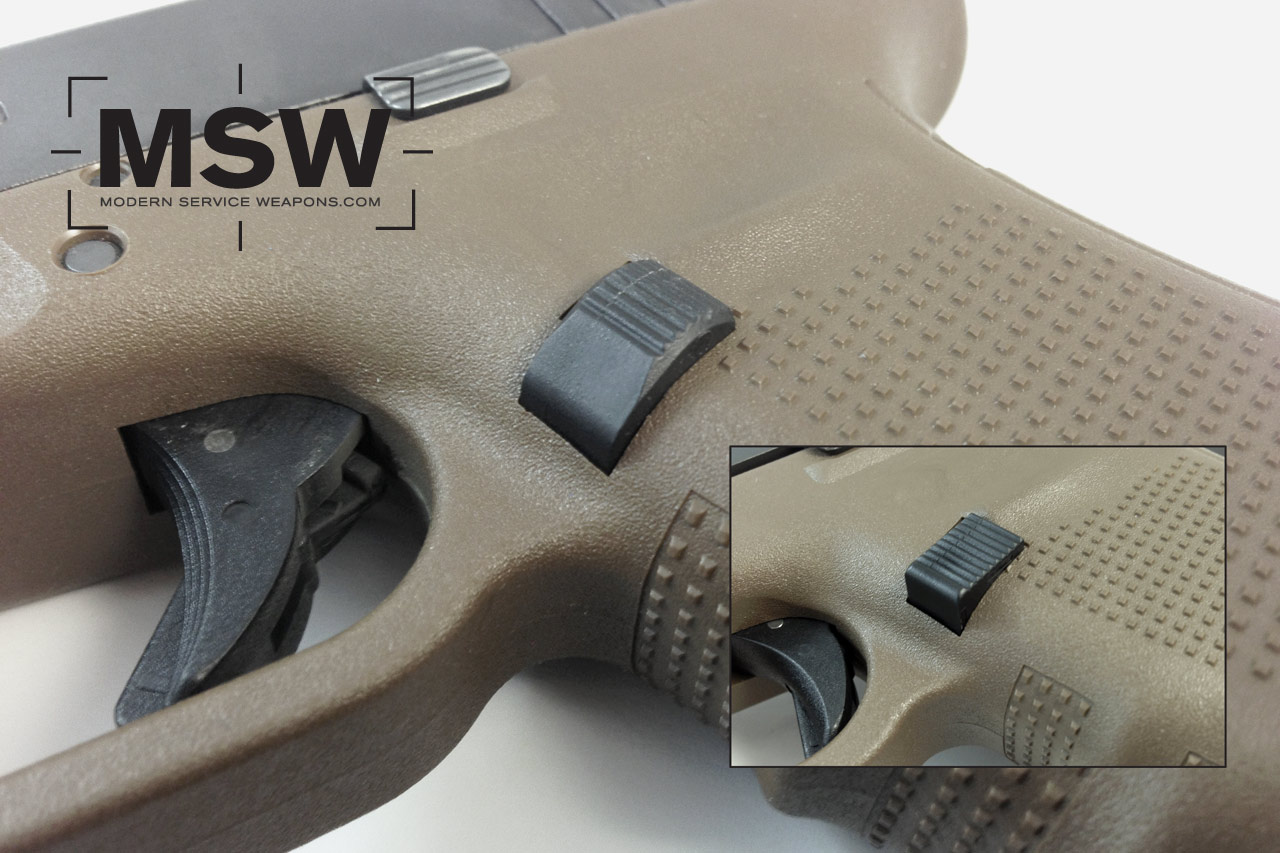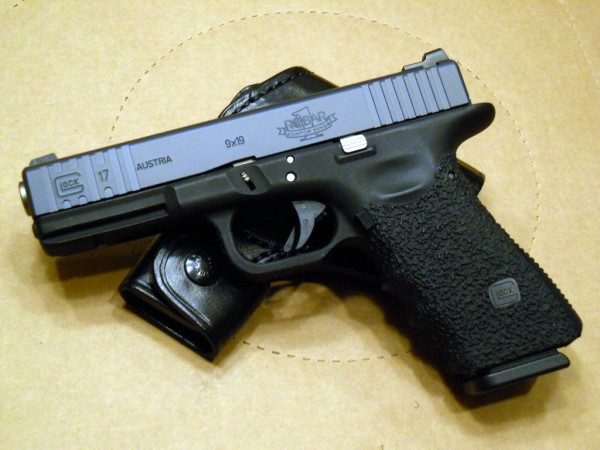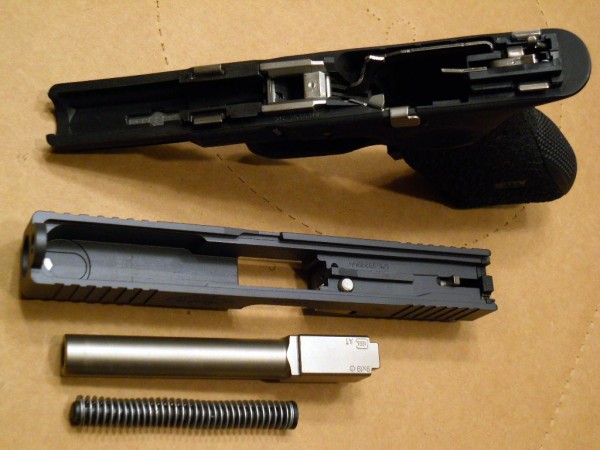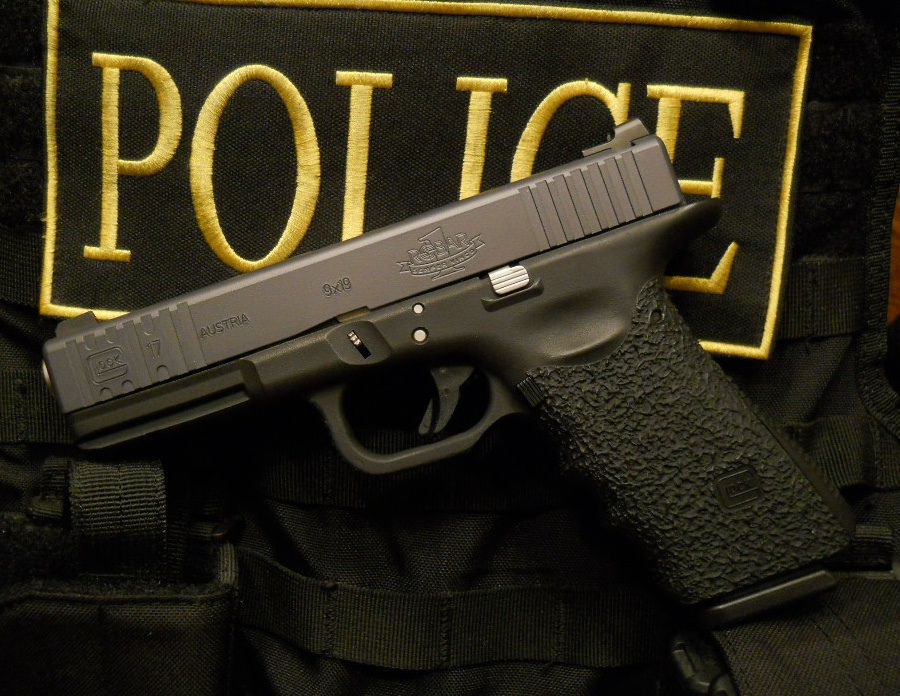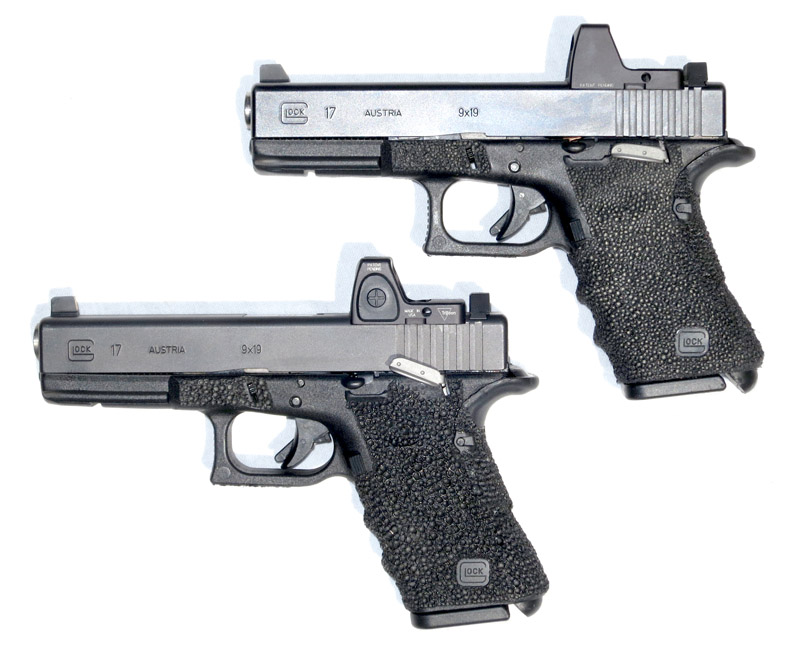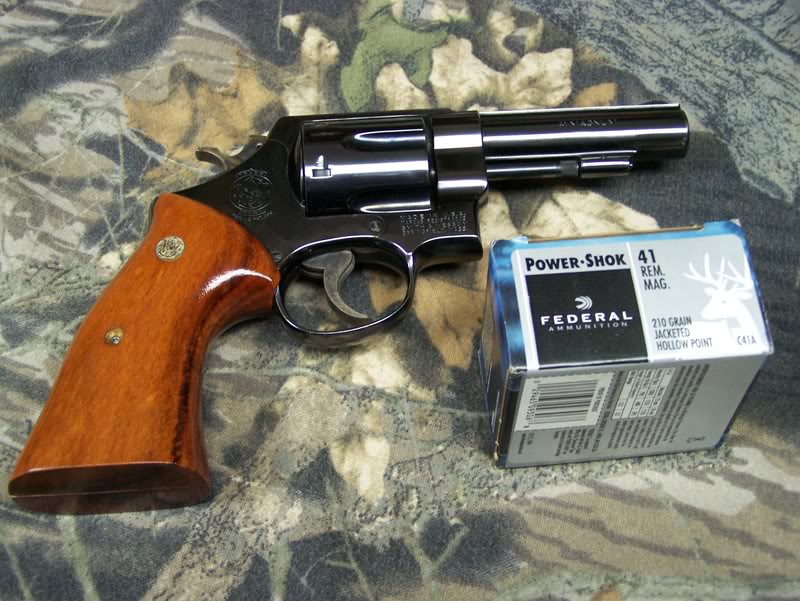While it is a very minor problem and was easily fixed, I did run into a snag with the 12 round P224 magazines seating correctly while running the gun. It was a problem particularly if I was doing a reload with retention where the slide was in complete lock up. It turns out that the base pads on both magazines were slightly oversized. If you look at the picture above, you can see a very tight fit, especially in the area where the base pad steps up to meet the grip shell. I found myself periodically having to smack the bottom of the magazine to get it seated correctly.
I did not have to take much off of the base pads to get them to work better. A few passes with a smooth cut file and I was done. They insert properly in a single motion now and have only slight bit of movement in lock up.
The rest of this update is a comparison in pictures. According to each company’s web site, the P224-9 SAS weights 29 ounces dry; the Glock 19 weighs 21.6 ounces empty: the Glock 26 weighs 19.75 ounces empty and the M&P9C weighs 21.7 ounces dry.
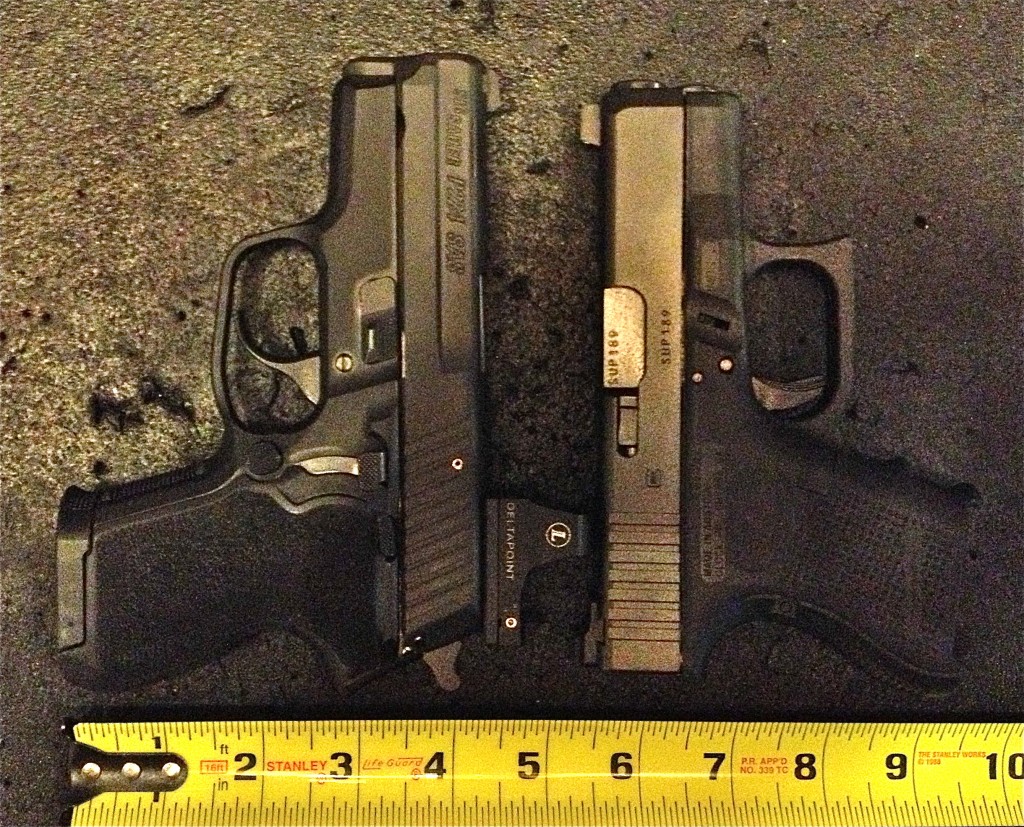
P224 next to the Glock Model 26. (it is actually a G27 because one was handy, but they are the same size.)
I have one more range session planned for the P224-9 and I will post those results once I am done. I plan to go only to 5000 rounds with this gun. I do not find anything smaller than a G19 or a P228/9 comfortable to shoot for extended periods of time and I have no real desire to push it.




